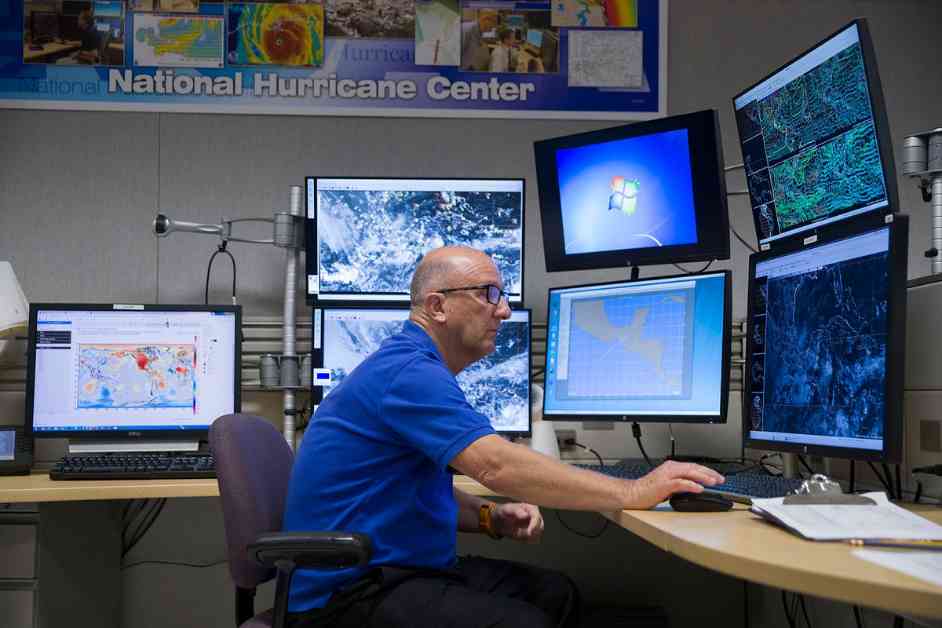In the realm of weather forecasting, a complex and intricate system of satellites, airplanes, radar, computer models, and expert analysts collaborates seamlessly to provide the public with accurate and timely information about impending weather events. While the forecasts we see on our TV screens may appear effortless, the reality behind the scenes is a dynamic network of data collection, analysis, and dissemination that is orchestrated by the National Oceanic and Atmospheric Administration (NOAA) and its National Weather Service.
The Critical Role of NOAA in U.S. Weather Forecasts
Atmospheric scientists Christine Wiedinmyer and Kari Bowen shed light on the pivotal role NOAA plays in shaping most U.S. weather forecasts. When we tune into our local weather reports, the information we receive is a product of real-time data collected by NOAA’s extensive array of tools, including satellites, airplanes, weather balloons, radar systems, and weather stations worldwide. This data is fed into sophisticated computer systems at NOAA, where it undergoes rigorous analysis to paint a comprehensive picture of the current atmospheric conditions.
NOAA forecasters utilize a combination of advanced computer models, scientific principles, and their own expertise to predict weather patterns ranging from immediate conditions to long-term seasonal outlooks. When severe weather looms on the horizon, NOAA issues official alerts to warn the public, ensuring safety and preparedness in the face of potential threats. This crucial analysis is conducted well before private weather companies or TV stations receive the information for public dissemination.
The Vital Role of NOAA’s Satellite Fleet and Maritime Buoys
A cornerstone of NOAA’s forecasting capabilities lies in its fleet of 18 specialized satellites that are equipped with cutting-edge instruments designed to monitor essential weather phenomena critical for accurate predictions. These satellites provide invaluable data on a wide range of atmospheric conditions, from surface temperatures to water content, enabling forecasters to anticipate weather patterns with precision.
While some private companies have begun investing in satellite technology, the sheer scale and sophistication of NOAA’s satellite network make it a formidable challenge to replicate. Additionally, NOAA’s network of over 1,300 maritime buoys strategically placed across oceans worldwide plays a vital role in measuring crucial parameters such as water temperature, wind speeds, and wave heights, which are indispensable for coastal warnings and long-term forecasting efforts.
Weather Forecasting: A Historical Perspective and Ongoing Evolution
The history of weather observation dates back to President Ulysses S. Grant’s establishment of the first national weather service in 1870, marking the beginning of a legacy of scientific advancement in meteorology. The evolution of weather forecasting from a government service under the Department of Agriculture to its current status within the Commerce Department underscores the enduring importance of weather data in ensuring public safety and supporting various industries.
As the discussion shifts to the feasibility of private companies creating independent forecasts without relying on NOAA’s data, the challenges become apparent. While some companies may have the resources to develop their satellite systems, the comprehensive and widespread data collection network maintained by NOAA remains unparalleled in scope and reliability. The intricate process of data analysis and model simulation required for accurate forecasts underscores the complexity of weather prediction, a task that cannot be easily replicated by private entities.
The Value of Climate Data in Forecasting Accuracy
In a rapidly changing climate landscape, the relevance of climate data in weather forecasting cannot be overstated. The interconnected nature of Earth’s systems demands a holistic approach to predicting weather patterns, taking into account evolving climate trends and their impact on weather phenomena. From drought conditions to rising global temperatures, understanding these shifts is essential for producing accurate and reliable forecasts that benefit society at large.
Collaboration and Accountability in Weather Forecasting
NOAA’s collaborative efforts with private sector partners, academia, and nonprofits reflect a commitment to enhancing the quality and reach of weather forecasts. Private weather companies and media outlets play vital roles in disseminating NOAA’s forecasts to a broader audience, ensuring that crucial weather information reaches the public efficiently. Industries ranging from aviation to agriculture rely on NOAA’s data for operational planning and risk management, highlighting the widespread impact of accurate weather predictions.
In a landscape where public safety and property protection are paramount, NOAA’s status as a taxpayer-funded agency ensures accountability and trustworthiness in its data and forecasts. The agency’s dedication to serving the public good, rather than profit-driven motives, underscores its mission to safeguard lives and property through reliable weather information. The invaluable role of NOAA in shaping weather forecasts and ensuring public safety stands as a testament to the enduring importance of scientific expertise and collaboration in meteorology.
This article was originally published on The Conversation. Read the original article for further insights and perspectives on the evolving landscape of weather forecasting and the critical role of NOAA in shaping our understanding of the weather.










